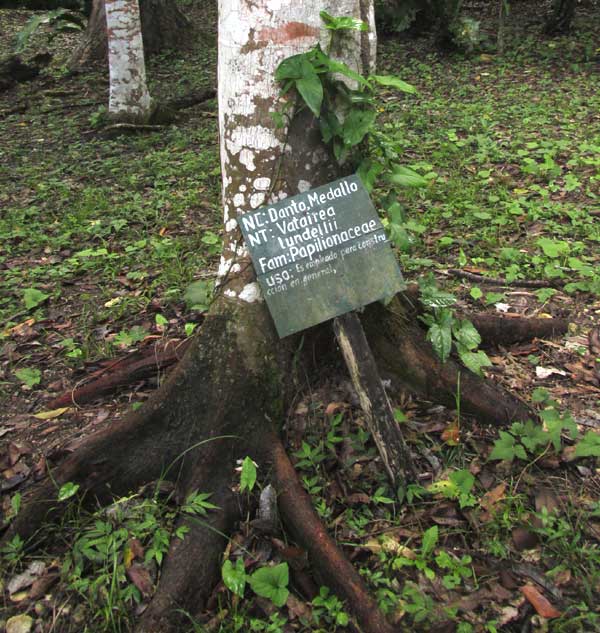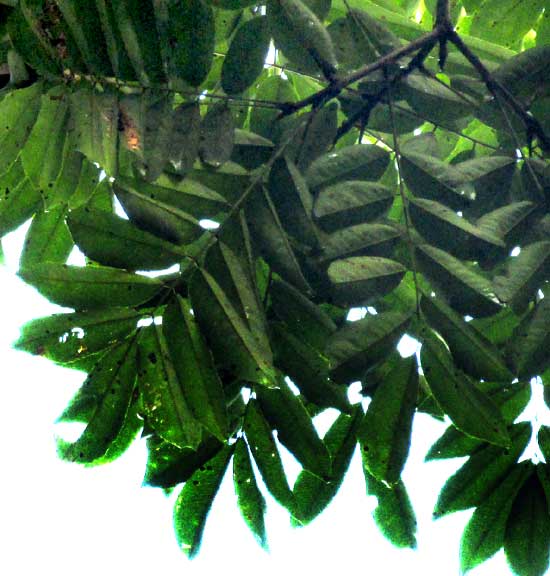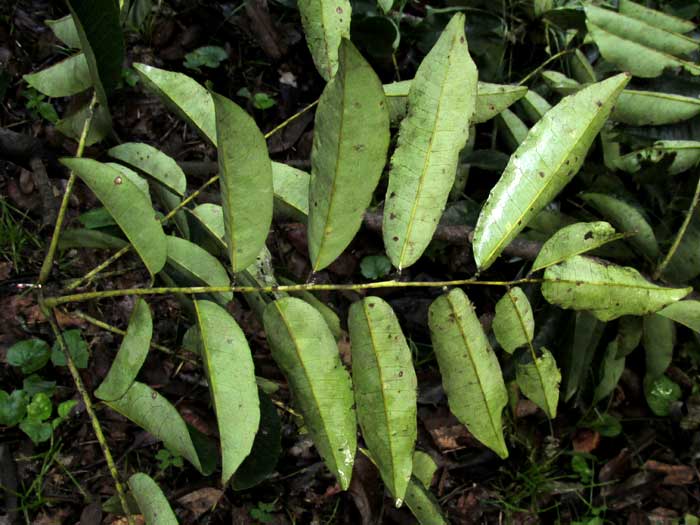Excerpts from Jim Conrad's
Naturalist Newsletter
from the November 9, 2018 Newsletter with notes from a camping trip into northern Guatemala's Petén department
VATAIREA TREE
It's a special pleasure to meet a kind of tree I've never seen or even heard of, and that happened last October 2 when I was camping in Rosario National Park in northern Guatemala's Petén district, on the east side of the town of Sayaxché. Though the tree grew there naturally and was part of the surrounding forest, one in the campground was identified, making it easy for me. Below, you can see the tree's trunk:

The sign gives its Guatemalan Spanish names as Danto and Medallo, though I read that in other parts of its distribution area it's called Tinco, Amargoso, Amargo-Amargo, Arisauru, Yaksaru, Mora, Gele Kabbges and even other names, so it seems to be a species that has caught many peoples' attention. It's VATAIREA LUNDELLII, a member of the Bean Family, occurring from southeastern lowland Mexico south along the Atlantic side to Panama. The sign also says that its wood is used in general construction, which probably accounts for its many names.
The identification sign leaning against the trunk originally might have been planted beside a different tree, even a different species, so good leaf pictures were needed to confirm the ID on the Internet. However, this was a tall tree and all leaves were high above. The telephoto lens managed to pick out the ones shown below:

They're pinnately compound leaves, very commonly seen on members of the Bean Family, fairly similar to Pecan tree leaves up north. The night before the picture was taken, a storm had knocked some branches down, so a shot of a leaf on the ground matching what was above appears below:

The leaflets' venation is fairly distinctive, the secondary veins almost forming right angles with the midribs, plus their undersurfaces look silvery, or "glaucous."
Not only is Vatairea lundellii a species much used for general construction, in the forest it often is noted as a dominant tree, partly because of its size, to about 130 feet (40m).
I looked for flowers and/or fruits, but I read that it flowers from March to May, and apparently by October the legumes already have fallen.